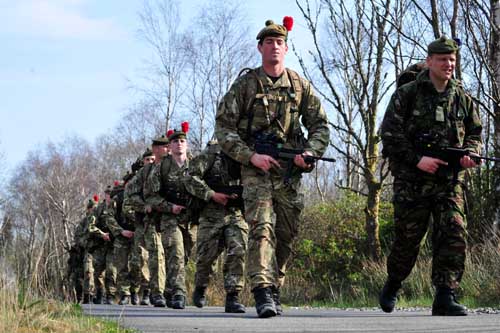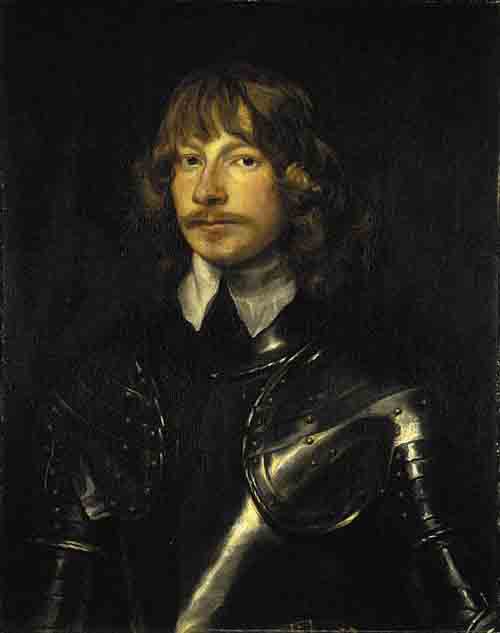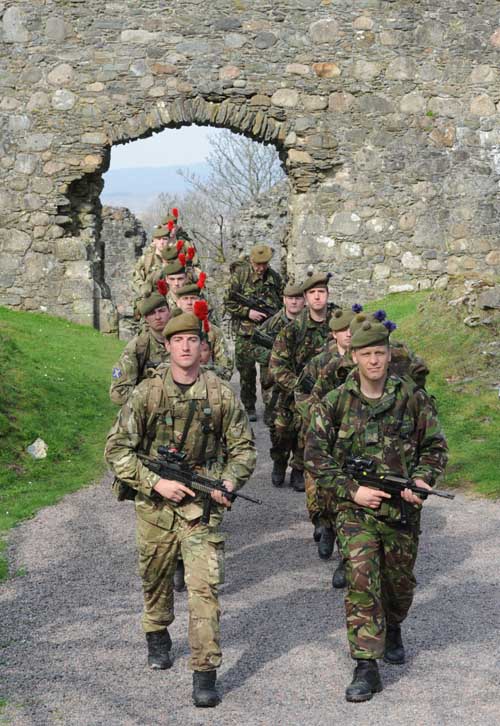TROOPS from the Royal Regiment of Scotland took part in Exercise Montrose March this weekend to mark the 400th Anniversary of the birth of James Graham, 1st Marquis of Montrose in 1612 – arguably Scotland’s greatest battlefield commander and one of the finest generals in Europe.
The 32-mile patrol by members of the 3 SCOTS and 7 SCOTS battalions recreated part of the march on Inverlochy Castle by Montrose and his Royalist army to face the Covenanter army of the Earl of Argyll in 1645.
The Exercise also had a serious training emphasis, Sergeant William Maclennan from 7 SCOTS explained: “The marching troops were able to undertake a number of training opportunities.
The march had practical applications for the troops
“They were tested on tactical navigation, First Aid, patrol endurance, administration in the field, and of course they were able to study lessons from a past military campaign.”
The Marquis of Montrose took to Scottish hills in the depths of winter. From Loch Ness his army entered Glen Tarff, turning south west to march parallel to the Great Glen.
During the march Montrose’s troops encountered and killed a number of soldiers from the Covenanter army.
The survivors fled to Inverlochy with the news that Montrose was marching on the castle.
Having been delayed to allow the slower part of his force to catch up, Montrose crossed the Spean and led his army towards the Inverlochy fortification.
In thirty-six hours his followers had marched over thirty miles through ‘. . . . country known to none but drovers and hunters in pursuit of deer’. Most of them had ‘. . . .not taisted a bitte of bread these two days, mairching high mountains in knee deepe snow’.
Wet, weary and hungry they stood to arms throughout the frosty moonlit night, the silence broken only by the odd skirmish between rival scouts.
James Graham, 1st Marquis of Montrose, marched on Inverlochy Castle
Dawn broke and Montrose and his ally, Alasdair MacColla, assembled their troops who were outnumbered two to one by the combined force of Clan Campbell and the Covenanters.
At the centre of his army Montrose placed Clan MacDonald – sworn enemies of the Campbells. Their charge was devastating.
The Campbells were routed and lost 1500 men, while Montrose and MacColla had four killed and 200 wounded.
Captain Alex Rose 3 SCOTS said: “Today Campbells and MacDonalds fight side by side as soldiers of The Royal Regiment of Scotland. The Regiment is immensely proud of its heritage and traditions.
“Scottish Regiments have always had a strong sense of family, with generations following generations into the ranks. It has a tradition of producing courageous, resilient, and tenacious infantry soldiers.
“The five Regular and two Territorial Army battalions of the Regiment offer a variety of locations and challenging roles. The Regiment’s battalions are based in Canterbury, Germany, Inverness and Edinburgh and retain strong links with their local recruiting areas.”
Officer Commanding Exercise Montrose March Major Crawford Maclellan added: “The Scottish soldier can deploy to the battle by helicopter in the Air Assault role, by Warrior Armoured Fighting Vehicle, boat or foot.
“He benefits from Scotland having some of the most challenging training environments in the world which can prepare soldiers for operating in hostile regions across the world.
“This is typified by the areas which Montrose passed through on his way to Inverlochy Castle.”
During the modern day march the troops passed through the training area the Commandos used during the Second World War around the area of Spean Bridge; Glen Roy featuring the glacial ‘parallel roads’; and the North side of Ben Nevis.
The troops finished at Inverlochy Castle where Lieutenant Colonel (Retired) Malcolm Mcvittie, an expert on Montrose Campaigns addressed the participants.




